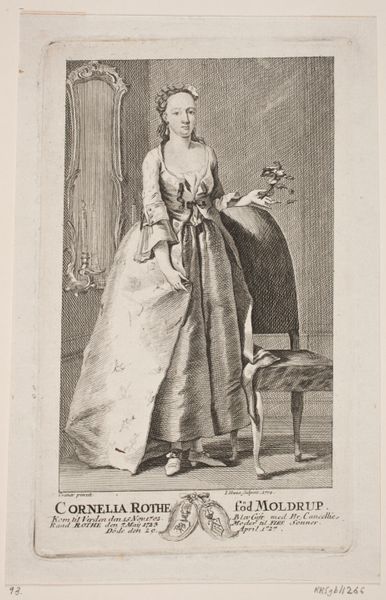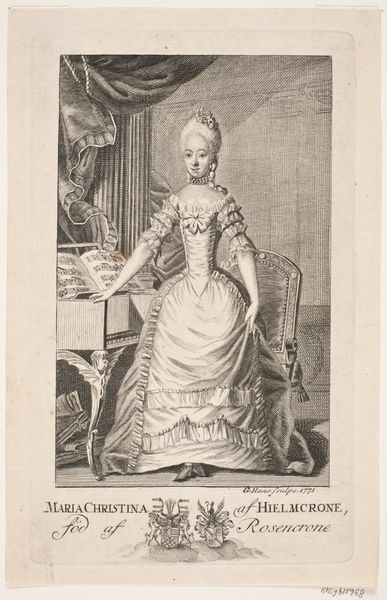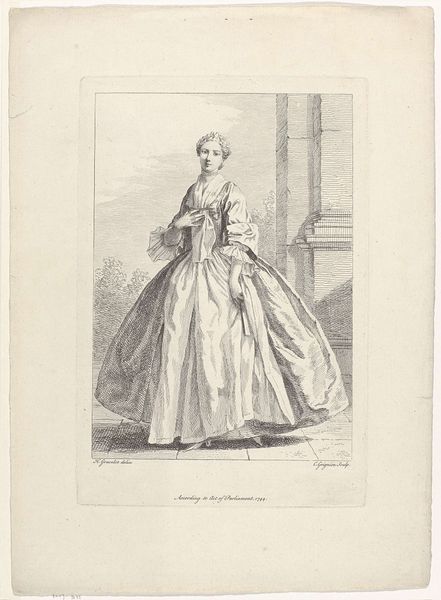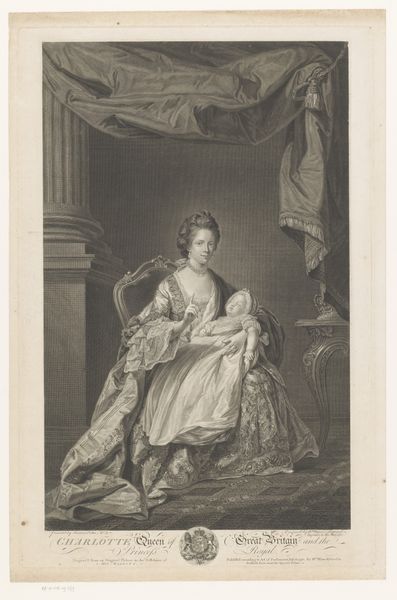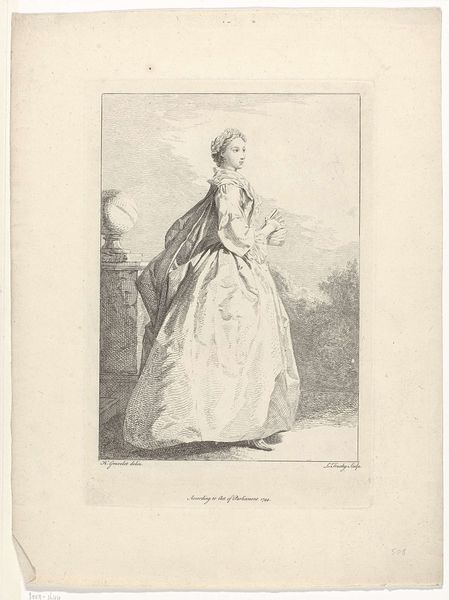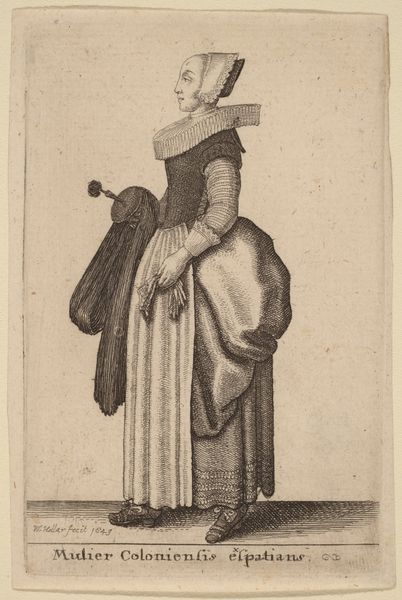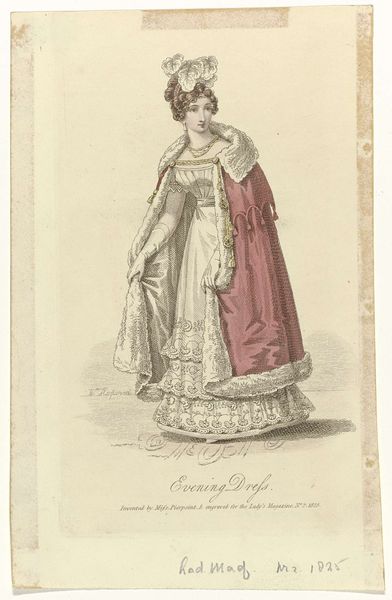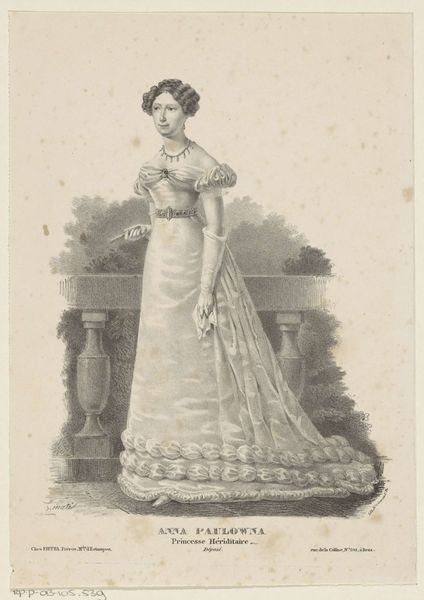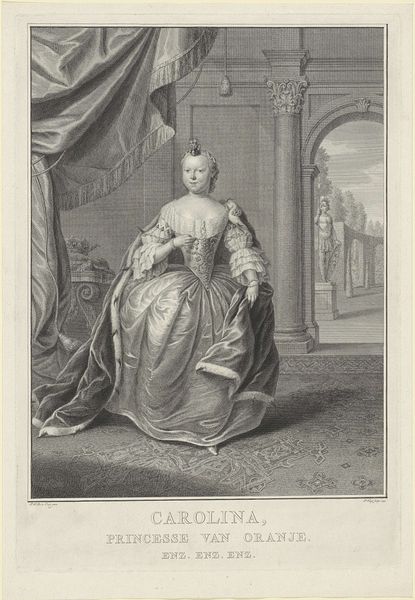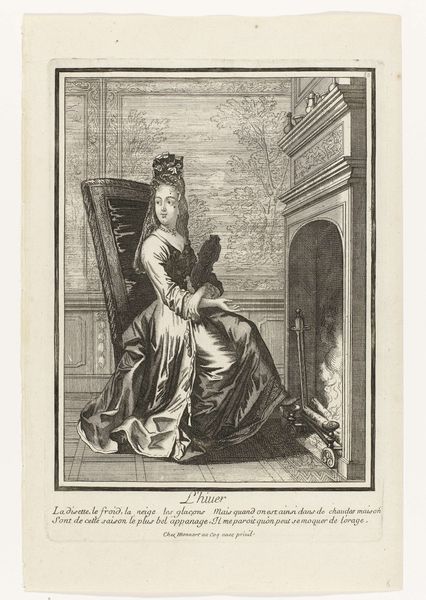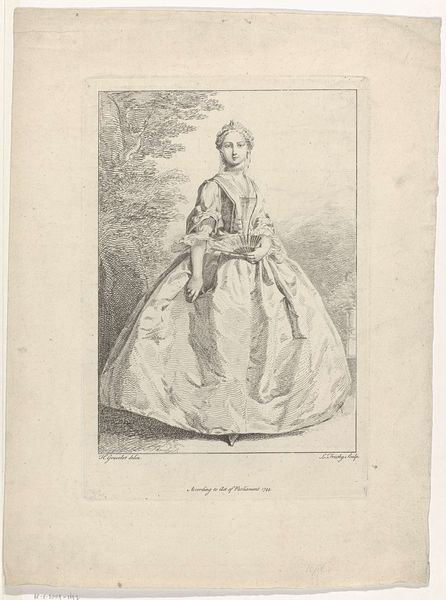
Dimensions: 299 mm (height) x 121 mm (width) (plademaal)
Curator: Here we have an engraving dating back to 1774, created by Jonas Haas. The work, titled "Cornelia Rothe," captures the likeness of a woman of the same name. What strikes you most about this portrait? Editor: Initially, it’s the formality, but also the hint of melancholia that pervades the image. The delicate lines and the woman's somewhat subdued gaze suggest a carefully constructed persona, perhaps reflecting the social expectations of women during that era. Curator: Indeed. Haas was quite adept at capturing the character of his sitters through his meticulous engraving technique. It’s interesting how prints like this circulated within specific social and intellectual circles. In the late 18th century, prints served as vital tools for disseminating knowledge and reinforcing class status through portraiture. Editor: Absolutely, and it makes me consider Cornelia Rothe's place within that framework. How did her social standing shape the production and reception of her portrait? The choice of rococo style is very deliberate. It implies a certain level of sophistication and adherence to contemporary fashion trends. Curator: Precisely. The Rococo style, evident in the flowing lines of her dress and the ornate details of the room, reflects a cultural emphasis on elegance and refinement. It was crucial for individuals, particularly women, to project an image of cultured gentility. This portrait subtly affirms Cornelia Rothe's position within that world. Editor: I can’t help but also think about the power dynamics at play here. Who commissioned the work, and how complicit was Cornelia in constructing this image of herself? Does this representation uphold or subvert societal norms? Curator: Those are insightful questions, and it’s not always easy to pinpoint the exact agency individuals had within such systems. Engravings like this do provide invaluable glimpses into the visual culture and self-presentation strategies of the 18th century elite. The placement of this work within our contemporary museum spaces allows us to actively critique its original social and political implications. Editor: It’s a potent reminder that artworks are not neutral objects. They are deeply intertwined with the complex histories of power, identity, and representation. Looking at this portrait now encourages critical thought and dialogue regarding its significance, in ways that surpass the original context. Curator: Agreed. Engaging with these layered narratives and varied perspectives enriches our comprehension of this work's role and legacy. Editor: It transforms it from a static image into a continuing, evolving conversation.
Comments
No comments
Be the first to comment and join the conversation on the ultimate creative platform.
